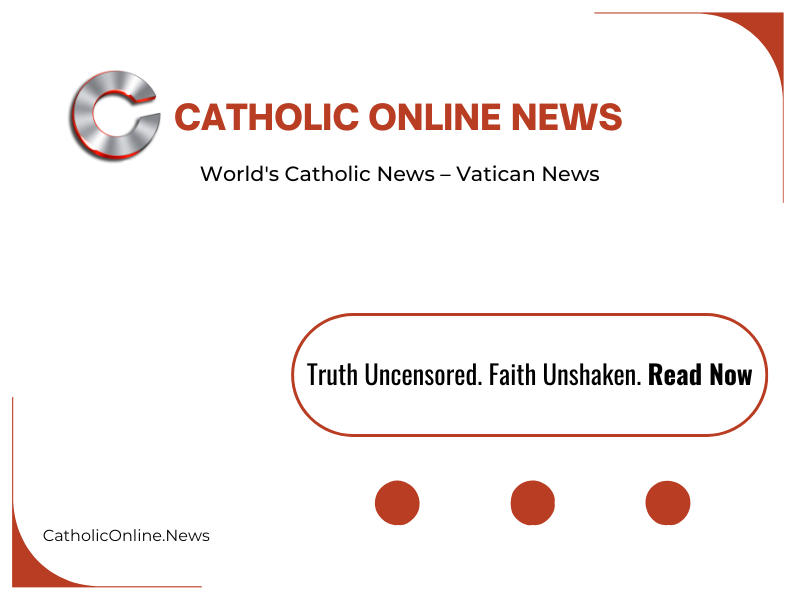We ask you, urgently: don't scroll past this
Dear readers, Catholic Online was de-platformed by Shopify for our pro-life beliefs. They shut down our Catholic Online, Catholic Online School, Prayer Candles, and Catholic Online Learning Resources essential faith tools serving over 1.4 million students and millions of families worldwide. Our founders, now in their 70's, just gave their entire life savings to protect this mission. But fewer than 2% of readers donate. If everyone gave just $5, the cost of a coffee, we could rebuild stronger and keep Catholic education free for all. Stand with us in faith. Thank you.Help Now >
Fabrica Ecclesiæ
FREE Catholic Classes
A Latin term, meaning, etymologically, the construction of a church, but in a broader sense the funds necessary for such construction. This expression may also be used to designate the repairing and maintenance of churches, the daily expense of worship, and to the amount requisite for covering these expenses. In this particular connexion, the expression is first met with in the letter of Pope Simplicius to Gaudentius, Bishop of Aufina (19 Nov., 475); however, even then it was not new, being borrowed from profane usage.
During the first Christian centuries the temporalities intended to meet the expenses incurred by the religious services carried on throughout a diocese belonged entirely to the cathedral church, and constituted a common fund which the bishop used, at his option, in defraying the expenses of religion, supporting his ministers, and caring for the poor. But in the fifth century, particularly in Italy, this common fund was divided into four parts, one of which was set aside for the fabrica ecclesiæ . In Sicily, however, in 494, no portion was especially reserved for the fabric, and in Gaul, such an allotment seems to have been unknown. In Spain, a third of the ecclesiastical revenues was assigned to the luminare (lights), a term synonymous with fabrica . The increase of Christianity in the rural districts brought with it a change of discipline, according to which each church obtained a separate patrimony. In fact, benefactors no longer bestowed their gifts on the entire diocese, but on one particular church, frequently in honour of some saint specially venerated there. The common fund itself was divided among the churches of the diocese. Some writers maintain this division was owing to the establishment of ecclesiastical benefices ; others claim that it followed the canonical recognition of the private ownership of churches. After vainly endeavouring to restrict the exercise of public worship to churches whose ownership had been completely renounced by the founders, the canon law eventually permitted public worship in churches that remained the private property of an individual, a monastery or even the episcopal mensa, or estate. The owner, however, was obliged to set apart a special fund for the needs of the church ( pro sertis tectis, or for the luminare ). Henceforth, when a bishop established a new parish, he was bound to provide for its needs by a specified income to be deducted from the common diocesan estate or fund–of course, if no benefactor had otherwise endowed the parish. Some hold that in consequence of the principles governing feudal society all medieval churches and their revenues became private property, and that the conflict of Gregory VII and his successors against lay investitures was in reality an effort to restore its lost possessions to the ecclesiastical domain. The result of so much strife was the transformation of former proprietary rights into the right of patronage ( Jus patronatus ).
While ecclesiastical ownership was going through these phases, the canon law decided who must contribute to the maintenance of a particular church, i.e. its owner, and all recipients of its revenues (Synod of Frankfort, 794); under pain, therefore, of forfeiting his right of patronage, the patron of a church must share the burden of its maintenance; so too the incumbent of the ecclesiastical benefice and those to whom the tithes have been granted ( decimatores ). Finally, when the resources of the church were insufficient, the faithful themselves were bound to contribute to the expenses of Divine worship. These provisions were sanctioned by the Decretals of Gregory IX (cc. i and iv de ecclesiis ædificandis, III, 48), and by the Council of Trent (Sess. XXI, de ref. c. vii); they represent in this matter the common ecclesiastical law (see B UILDINGS, E CCLESIASTICAL ). The fabrica ecclesiæ means also the persons charged with the administration of church property, usually laymen. The origin and historical development of this institution have not yet been studied very closely. Their organization, moreover, has differed from one country to another, nor have they been uniformly organized in the same country. Churches subject to the right of patronage and those incorporated, even for temporal administration, with monasteries, were more closely affected than other churches by this condition of dependency. In such churches the patron occasionally appointed an officer to administer the temporalities. It is commonly believed, however, that "church fabrics" do not antedate the thirteenth century. In the first ages of the Church the bishop administered church property with the aid of deacons and priests, but during the fourth century there appeared in the Orient and in certain countries of the West, bursars ( œconomi ), who, subject to the direction of the bishop, managed the temporal affairs of churches; in other countries the bishop continued to administer the church property with the assistance of some trustworthy man of his choice. When each church came to have its own particular patrimony, the bishop was naturally obliged to turn over the administration of such property to the local clergy, reserving nevertheless a right of control. During the long Investitures conflict this right, it may be, was completely annihilated; when peace was restored the clergy were often obliged to appeal to the inhabitants of the parish to defray the expenses of religion. In France and England especially, the assembled parishoners established the portion of expenses that ought to be borne by the community; naturally, therefore, this assembly was henceforth consulted in regard to the most important acts connected with the administration of the parish temporalities. For that purpose it selected lay delegates who participated in the ordinary administration of the ecclesiastical property set aside for parochial uses. They were called vestrymen, churchwardens, procurators ( procuratores ), mambours ( mamburni ), luminiers, gagers, provisores, vitrici, operarii, altirmanni, etc.
In the councils of the thirteenth century frequent mention is made of laymen, chosen by their fellow laymen to participate in the administration of temporal affairs; at the same time the rights of the parish priest and of ecclesiastical authority were maintained. A reaction is visible in the councils of the fourteenth, fifteenth, and sixteenth centuries which undertake to check the tendency towards an exclusively lay administration of the parochial property. Eventually the Council of Trent (Sess. XXII de ref. c. ix) admitted participation in the administration of ecclesiastical property, but demanded that at all times and in all places the lay administrators render an annual account to the bishop or to his delegate. As no general law has determined either the competency or the composition of fabric committees ( conseils de fabrique ) there has been in this respect very great variations. In modern times secular power has frequently interfered in the administration of ecclesiastical property set apart for purposes of worship, and in the organization of church fabrics. Even now, in most European countries, the State regulates the administration of ecclesiastical property , and the proceedings of church fabrics. (See under B UILDINGS, E CCLESIASTICAL, an outline of the regulations actually in force.)
Join the Movement
When you sign up below, you don't just join an email list - you're joining an entire movement for Free world class Catholic education.
- Easter / Lent
- Ascension Day
- 7 Morning Prayers
- Mysteries of the Rosary
- Litany of the Bl. Virgin Mary
- Popular Saints
- Popular Prayers
- Female Saints
- Saint Feast Days by Month
- Stations of the Cross
- St. Francis of Assisi
- St. Michael the Archangel
- The Apostles' Creed
- Unfailing Prayer to St. Anthony
- Pray the Rosary
![]()
Copyright 2025 Catholic Online. All materials contained on this site, whether written, audible or visual are the exclusive property of Catholic Online and are protected under U.S. and International copyright laws, © Copyright 2025 Catholic Online. Any unauthorized use, without prior written consent of Catholic Online is strictly forbidden and prohibited.
Catholic Online is a Project of Your Catholic Voice Foundation, a Not-for-Profit Corporation. Your Catholic Voice Foundation has been granted a recognition of tax exemption under Section 501(c)(3) of the Internal Revenue Code. Federal Tax Identification Number: 81-0596847. Your gift is tax-deductible as allowed by law.








